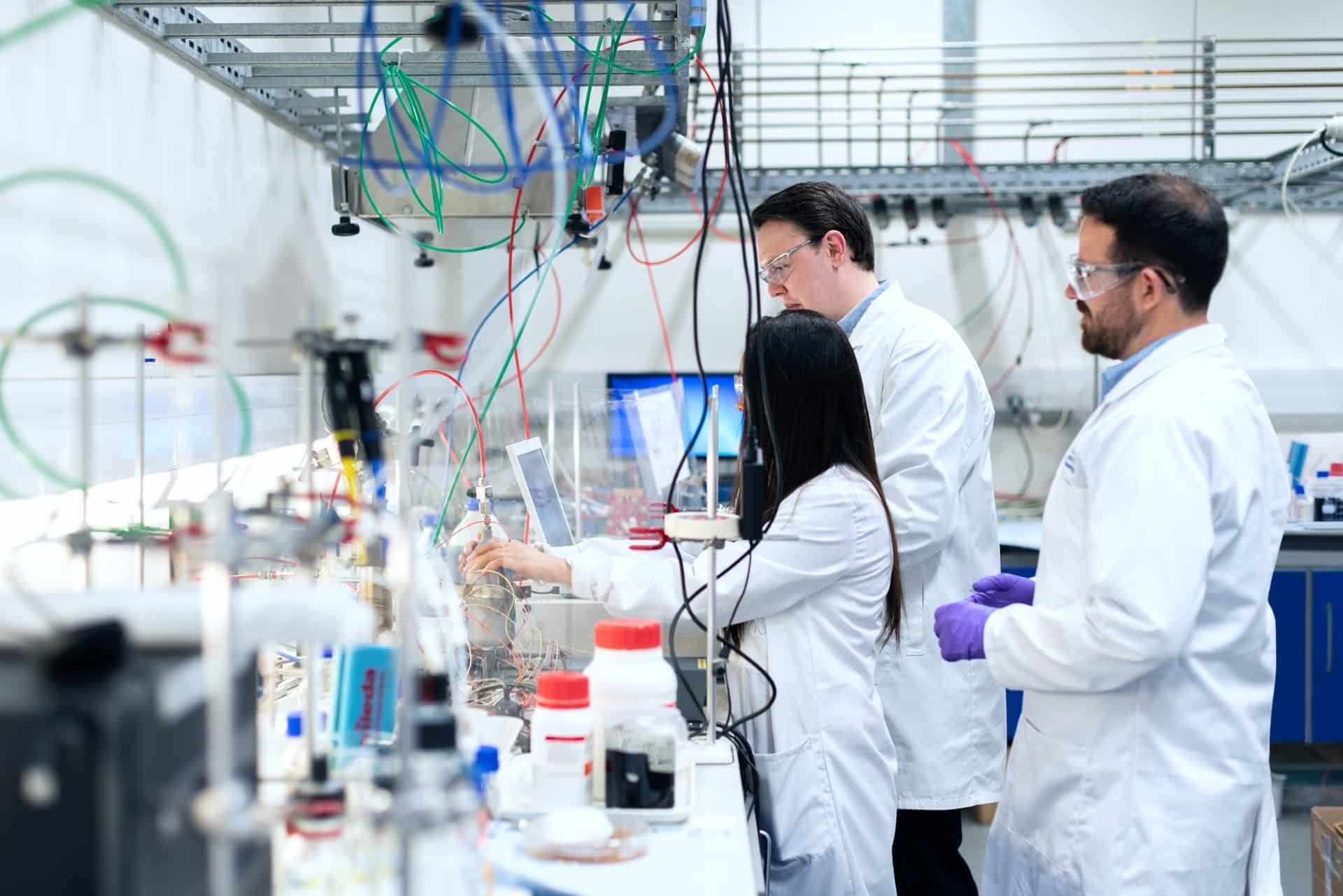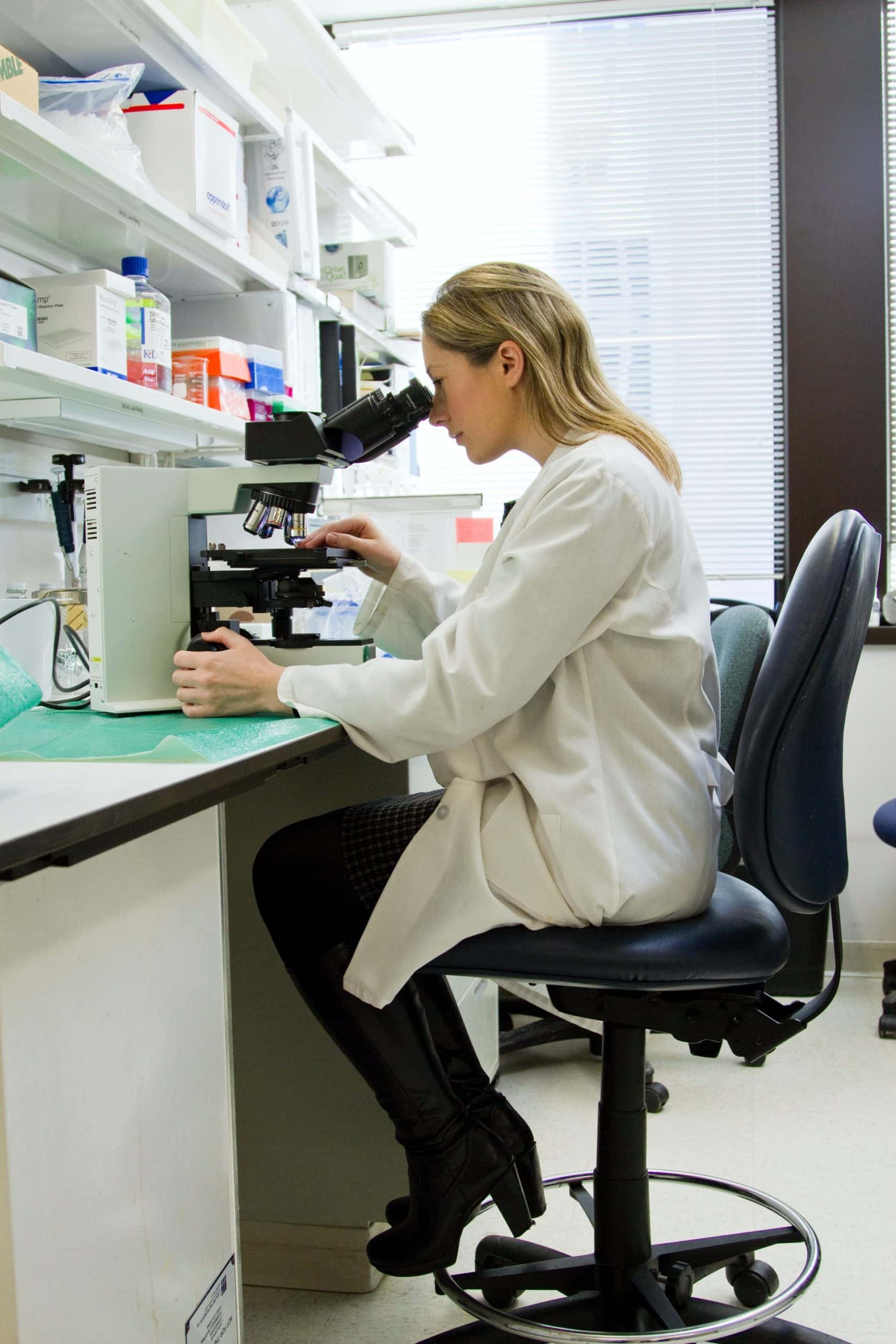Robotic systems, widespread digitization, automation, and Artificial Intelligence: the innovations transforming laboratories globally
Large-scale adoption of disruptive technologies in the laboratory environment heralds a new era for how research is conducted, documented, and distributed, building the foundation for future discoveries. Recently the recording of scientific research (particularly those who work in pharma) has grown considerably more complex, in part, driven by the globalization of science, combined with added intricate regulatory requirements.
This, along with other factors, such as the pressure to increase productivity, are stimulating a shift in how scientists complete research, a shift that aims to make laboratories smarter.
IMAGE: UNSPLASH
Given the complex nature of working in a laboratory and uncovering the mysteries of nature, scientists ought to have the best possible working environment, one that stimulates discovery, not hinders it. Yet many industry laboratories today are lagging behind in terms of digital progression.
In order for these laboratories to be successful, they rely on a quick turnover of samples. They must be processed and analyzed in not only a timely manner but also in a way that ensures the utmost accuracy of results. However often the biggest time-waster in many laboratories is manual labor: repetitive tasks that require high concentration and precision but are simply a case of recording results or monitoring an experiment and noting temperatures.
As these tasks are carried out by humans, the human error element is hard to reduce and can lead to the entire project having to be repeated if one item is recorded incorrectly. This is as Mckinsey & Company research highlights, one of the biggest time-wasters in R&Dand a frequent issue that researchers face in the laboratories of today.
It is also important to ensure the reproducibility of results so that researchers comply with certified standards that maintain a high quality of scientific research. The requirements can be especially difficult to adhere to, particularly if the laboratory has a digital deficit and is still reliant on paper as a method of data documentation. However, with advances in digitized software such as the electronic lab notebook (ELN) that is designed to simplify documentation and facilitate the compliance and transparency of results, these issues can be easily overcome.
It is also important to have an efficient system for recording samples and materials in order to monitor levels of use and know exactly when stocks need to be replenished. This is particularly important for pharmaceutical laboratories, which often get through materials very quickly. Having an inventory management systemthat can organize and log materials when they arrive
in the laboratory, is incredibly effective, especially when it can be directly connected to an electronic laboratory notebook.
The aforementioned digital solutions are the minimum requirement in an era defined by digital solutions. With disruptive technology such as Automation and AI, along with the wider concept of the Internet of Things (IoT), pharma laboratories that start the digitalization process earlier are bound to have the advantage.
Using these innovations, the aim is that all software, technology, instruments, and devices can be integrated into a unified laboratory network that ensures greater efficiency, transparency and facilitates oversight over entire projects, improving overall productivity in the laboratory. This concept is called laboratory 4.0 or the ‘smart lab’, and with the recent emphasis the pandemic has put on digital technologies and working smarter not harder, it is expected that in the coming years the adoption of disruptive technologies for the laboratory will increase substantially.
There are a number of forms of lab automation, as it has been a feature of many pharma laboratories since the 80s. With its inception, the main aims were to reduce manual labor tasks in the development and distribution of drugs. Consequently, when people hear automation they typically think of robots and big high-throughput machines; however, given recent advances in technology, this has led to smaller, more nuanced approaches to automation being created.
One example of this is the laboratory execution system, a plug’n’play system that allows for the automation of existing laboratory devices and equipment. This can also be considered an IoT product as it allows the connection between devices and the researcher’s documentation software, connecting the laboratory and opening up a number of opportunities.
Perhaps a bit further down the line is the prospect of AI and machine learning being widely implemented in the laboratory. This offers numerous opportunities and is being seen as the future of many industries- and research and development is no different. Its adoption will take the form of an advisory system, working in conjunction with automation to predict outcomes and construct the best possible courses of action within research projects.
For example, AI could assess all variables and predict which temperature or material would have the desired impact, saving the researcher from trying out numerous possibilities and wasting valuable and expensive chemicals. In addition to this, the nature of machine learning is its ability to learn and recollect pieces of information and successfully apply that knowledge to devise the best possible strategy, essentially it gets smarter with every use.
Being able to harness the abilities of AI in an environment that thrives off of transparency, accuracy and precision offers a golden opportunity for the pharma industry.
As digitalization continues to substantially improve the way pharma research is conducted, from the planning stage to production, the pressure is on for laboratories to get to an appropriate level of technological sophistication in order to maximize the opportunities the digital world creates.
Author Bio: Phoebe Chubb is a freelance writer who specializes in the implementation of IoT and other enabling technologies into the laboratory environment. She has published a number of articles on high-profile sites such as Hackernoon, IoTforall, The Pie Blog, and many more. In her articles she addresses the importance of digitalization in research and development, highlighting the pivotal role it plays in ensuring scientific advancement.
If you are interested in even more technology-related articles and information from us here at Bit Rebels, then we have a lot to choose from.


COMMENTS